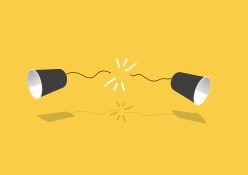There’s no substitute for your annual GP check-up, but between visits, run your own home checks so you can get help earlier if need be – it could save your life.
Spotting any potential problems early is the key to sorting them out painlessly – especially when it comes to your health. Make a habit of monitoring your body for changes. That way, you can get them checked out early. Many will not mean a serious illness, but don’t let that prevent you seeking a professional opinion. A good doctor would far rather you saw them, even if it turns out to be nothing, than be faced with treating an advanced condition that could have been caught sooner or prevented. So be proudly proactive and check yourself.
Check your breasts
Every woman needs to do this, especially those who have an immediate family member who had breast cancer, or had it before themselves, says Klerksdrop GP Anine van Tonder. Once a month, just after your period, stand in front of a mirror, or lie flat on your bed, with one arm above your head. With the flattened fingers of your other hand, press the tissue of the breast under your raised arm, working your way around the breast before lightly squeezing the nipple. If you feel any lump, hard or soft, or if any discoloured liquid is expressed from your nipple, see your doctor straight away.
Check your genitals
In good light, sit in front of a mirror with your feet drawn up and knees splayed, as for a gynae exam. Look, and gently feel, for any sores, warts or abnormal discharge – if you spot anything, see your gynae. Also encourage your man to check his testicles monthly (or do it for him!). It’s best after a warm shower or bath, when the skin of the scrotum is relaxed. Using both hands, gently roll each testicle between the fingers. It’s normal for one testicle to be slightly larger than the other, but if there’s a lump, swelling or change of any kind, he must see his GP at once. Testicular cancer is one of the most common male cancers in men under 39, and he’s at greater risk if he has a family history of testicular or breast cancer, was born with undescended testicles, has HIV or uses marijuana, says Dr Neville Wellington, a GP at Medicross Kenilworth in Cape Town.
Check your waistline
Being overweight puts you at greater risk of everything from cardiovascular disease to diabetes, but carrying extra kilos around your midriff is particularly bad, as you pack unhealthy fat around your vital organs. Place a tape measure at a point 1 cm below your belly button and measure your waist. As a woman, if it measures more than 80 cm, consider losing weight, and if it’s more than 88 cm, that’s crucial, says Dr Van Tonder. (Your man’s waist circumference should be less than 94 cm.) It’s best to see a dietitian to draw up a realistic, sustainable eating plan tailored to your specific tastes, energy needs and lifestyle.
Check your skin
Every few months, check your skin from your scalp to your soles and between the toes, looking for any new moles, sores, spots or skin patches – and for any changes in the ones you have. (Get your partner to help; check each other.) These could be changes in size, shape or colour. Asymmetrical, multicoloured moles that have irregular borders, are bigger than a pencil eraser and seem to be evolving or protruding and growing fast, are potentially dangerous. See your doctor straight away, says Dr Wellington.
Read more in your August issue of Balanced Life.







